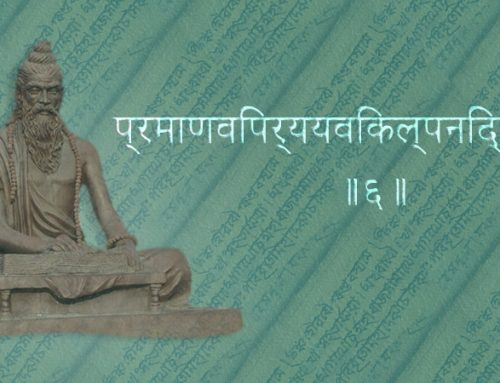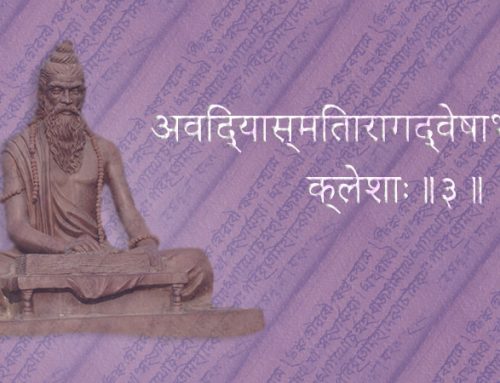2.1: Tapah svadhyaya isvara pranadhanani kriya yogah
These Sanskrit words will be familiar to anyone who knows their Nyamas from their Yamas! Patanjali puts extra emphasis on the last three Nyamas by starting Chapter 2 with the clear instruction that these qualities are non-negotiable for yogis.
Tapah (aka Tapas = to purify through heat or inner energy / burning enthusiasm).
Svadhyaya (= self study / knowledge of sacred scriptures)
Isvara pranadhanani (= surrender to the divine / devotion to the truth)
Kriya yogah (= the action / work / path of yoga)
One creative translation could be:
The path of yoga requires the cultivation of discipline, self-awareness and faith.
It is said that Sutra means ‘thread’ in Sanskrit. If we consider that Patanjali’s words are jewels ‘threaded’ together then, in our exploration in each newsletter, we are picking the most precious gems of wisdom.
In the last newsletter we looked at Sutras 1.12 to 1.16 – the yogic principles of ‘abhyasa’ and ‘viragya’ (practice and non-attachment). Now we are jumping to the second chapter, to 2.1 – 2.2. Chapter 2 deals with the specific practices, the tools that we can use on the path of yoga and it is in Chapter 2 that we find the Eight Fold path of Ashtanga Yoga.
The first Sutra distils the instruction on the work of yoga to just the last three Nyamas concepts, telling us that there is action required to be on the path of yoga. We need a inner devotion to live a pure and wholesome life; we need to study ourselves and philosophical texts; and we must be prepared to surrender to the divine or to a power higher than ourselves. (We are later told by Patanjali that if we can truly do just this ‘isvara pranadhanani’- then no other action is required.)
While ‘tapas’ can be said to include a burning enthusiasm for our yoga practice, we must understand that doing asana and meditating are not the real essence of the work. It is the work we do off the mat that counts. Living a life of purity in diet, actions, interactions and intentions; cultivating self awareness and seeking to be our best selves; and residing from a place of trust, connection and devotion.
2.2 tells us that the purpose of ‘Kriya yoga’ (the action) is to overcome the ‘kleshas’ (the obstacles) that stand in the way of ‘Samadhi’ (sustainable peace). In the next newsletter we will look at the ‘kleshas’; and identify the hurdles we need to overcome in order to reside in ‘Samadhi’.




